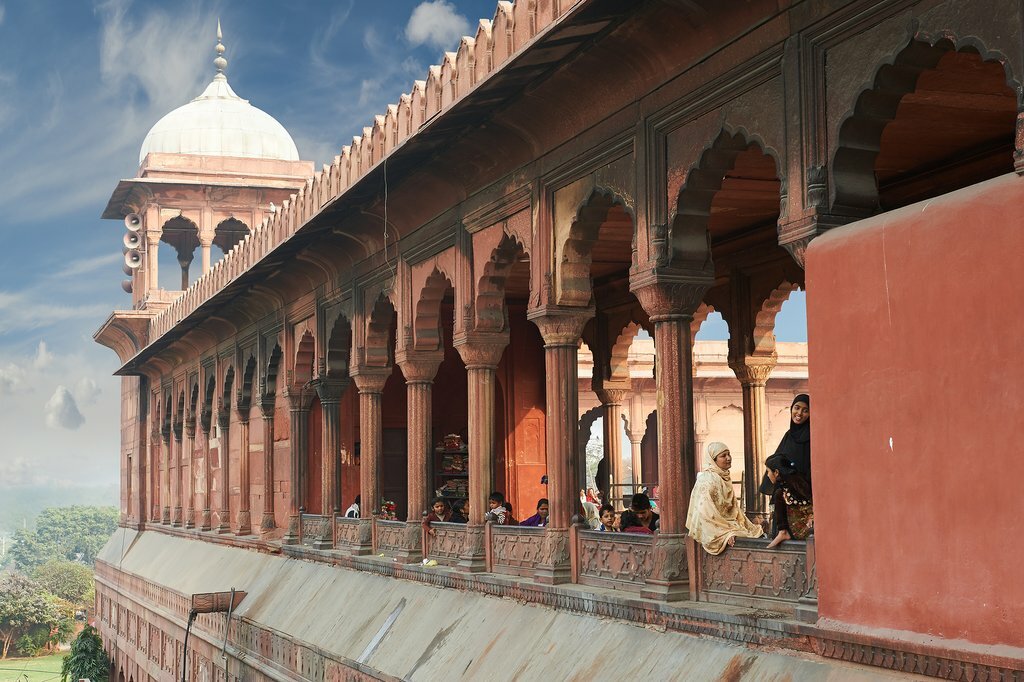
Golden Triangle Tour - 6 Days

Highlights
- Explore India's capital city, New Delhi, as well as historical Old Delhi
- See the architecture left behind by the Mughals and Sultans of Delhi
- Visit the Red Fort, Qutub Minar, and Humayun's Tomb
- Discover India's "Pink City," Jaipur, home to the Amer Fort and Hawa Mahal
- Witness India's most famous site, the magnificent Taj Mahal, at sunset
Brief Itinerary
| Day | Highlights | Destination |
|---|---|---|
| Day 1 | Arrive in Delhi | Delhi |
| Day 2 | Guided Tour of Delhi | Delhi |
| Day 3 | Transfer to Agra, Visit Agra Fort & Taj Mahal | Agra |
| Day 4 | Transfer to Jaipur via Fatehpur Sikri | Jaipur |
| Day 5 | Explore Jaipur | Jaipur |
| Day 6 | Return to Delhi, Depart |
Chat with a local specialist who can help organize your trip.
Detailed Itinerary
Day 1: Arrive in Delhi

Upon arriving at the international airport of Delhi in the morning, you'll be greeted with a traditional welcome. Then, you'll be escorted to your vehicle and taken to your hotel for the night. Check in, take your first day off, and relax!
Day 2: Guided Tour of Delhi

In the morning, your sightseeing begins. You'll visit the walled city of Old Delhi, where every street is buzzing with activity. The influence of the Mughals, who once ruled from the ramparts of the Red Fort, can be seen extensively. First, you'll visit Jama Masjid—the largest mosque in India, built in the 17th century. Later, you'll drive past the New Delhi area to visit Raj Ghat, India Gate, Rashtrapati Bhawan (Presidential Palace), the Parliament House, and other colonial buildings. The early 20th-century work of Edwin Lutyens, a British architect, prominently features in the colonial districts.
Finally, visit the famous Qutub Minar and Humayun's Tomb, a marvelous example of Persian-inspired Mughal architecture.
Day 3: Transfer to Agra, Visit Agra Fort & Taj Mahal

Today you'll transfer south to Agra to witness the architectural wonder of the golden age of the Mughals. Upon arrival, you'll be transferred to your hotel for a brief rest. Later we drive to visit the Agra Fort—a blend of Hindu and Mughal architecture—originally built by the Rajputs and renovated from time to time by different Mughal emperors with red sandstone, bricks, and the beautiful marble from Makarana. The Fort can more accurately be described as a walled palatial city.
After visiting the Agra Fort, you'll visit the Taj Mahal at sunset, a symbol of eternal love that stands on the southern bank of the Yamuna River. It was built by the fifth Mughal Emperor, Shah Jahan, in memory of his beloved wife, Mumtaz Mahal, who died in the 16th century. The charisma of the Taj Mahal never fails to impress, given its beautiful symmetry and white marble inlays.
Spend the evening visiting the bazaars, where descendants of the artisans who worked on the Taj continue to perfect their trade of marble craftsmanship.
Day 4: Transfer to Jaipur via Fatehpur Sikri

In the morning, you'll leave for Jaipur, the colorful capital of Rajasthan known as the "Pink City." En route, we will visit Fatehpur Sikri, a grand, deserted, Mughal royal city. The impressive and well-preserved citadel served as Akbar's political capital for 14 years until he abandoned it in 1585 following a drought.
Jaipur was the first planned city of its time, with imposing forts, dazzling palaces, and lush gardens. Today, Jaipur is the gateway to Rajasthan and still remains one of India's most important heritage sites, full of historic charm. We will end the day by exploring the colorful evening markets before getting some rest for a full day of sightseeing tomorrow.
Day 5: Explore Jaipur

After breakfast, we'll drive to the ancient capital of Amer, 7 miles (11 km) from Jaipur. Famous for its massive Amer Palace Fort, Amer was the ancient capital of the Kachhawaha dynasty for more than half a millennium. We then proceed to City Palace, a perfect blend of Rajasthani and Mughal architecture.
Next, we visit Jantar Mantar, an observatory built in the 18th century. Its solar devices can measure the day's progression with an error of just 2 seconds, making it an astronomical treasure that can still accurately make predictions today. Next, you'll visit Hawa Mahal ("Palace of the Winds"), a five-storied facade made of pink sandstone. Built in 1799, Hawa Mahal and its discreet windows (jharokhas) allowed royal ladies to watch street processions and festivities.
Day 6: Return to Delhi, Depart

Early in the morning, you'll transfer back to Delhi, where you'll be transferred to the International Airport for your departure.
More Great India Itineraries
Looking for more inspiration for your trip to India? Check out these other India itineraries, explore different ways to spend six days in India, or discover the best time to visit India.






